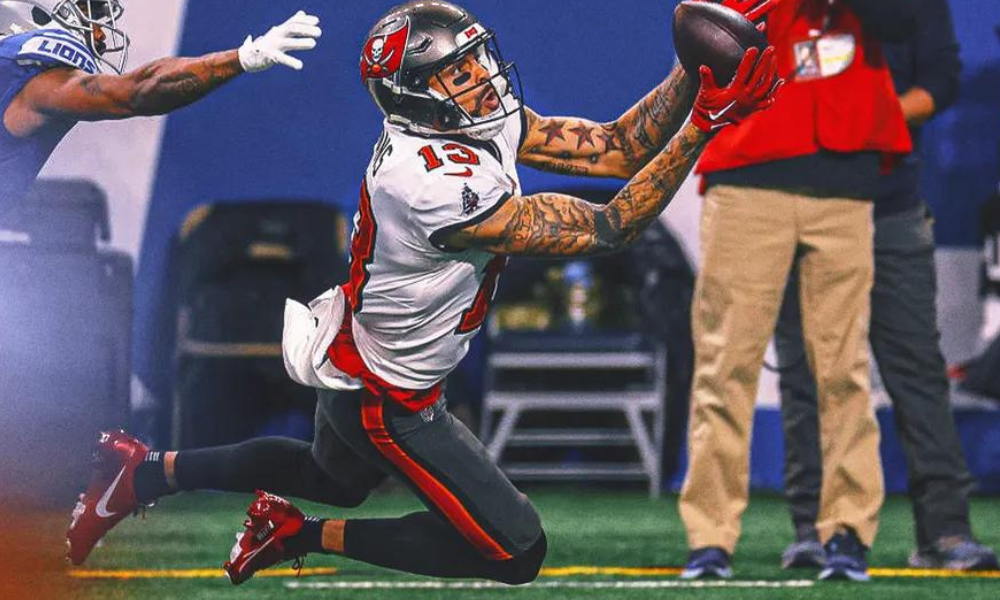
The Tampa Bay Buccaneers found an unlikely hero in Baker Mayfield in a season marked by unexpected turns and thrilling performances. Stepping into the massive shoes left by the legendary Tom Brady, Mayfield rose to the occasion and shone brightly, leading the Buccaneers to their third consecutive NFC South title. With an impressive tally of 4,044 passing yards, 28 touchdowns, and just ten interceptions, Mayfield’s command on the field was undeniable. However, as the Buccaneers face the offseason, they face a significant decision that could shape their future.
According to Tony Pauline of Sportskeeda, Mayfield’s potential new contract could cost $40 to $45 million annually. While rewarding Mayfield’s stellar performance is a priority, this financial commitment poses a challenge: balancing the need to retain a key player with the practicalities of managing a team where many contribute to its success. The Buccaneers now stand at a crossroads, weighing the value of individual brilliance against the collective strength that has defined their recent achievements.
As division winners, the Buccaneers find themselves in a unique position. Their success on the field translates to a lower pick in the upcoming draft, effectively placing them out of reach for the top quarterback prospects. This scenario adds another layer of complexity to the Mayfield dilemma. The option to draft a high-profile replacement isn’t readily available. While they could theoretically trade up, sacrificing valuable assets to secure a higher draft pick, this strategy seems unlikely for the Buccaneers.
This limitation intensifies the intrigue surrounding Mayfield’s contract negotiations. Without easy access to a top-tier quarterback through the draft, the decision to invest heavily in Mayfield becomes not just a matter of finance but of strategic necessity. The Buccaneers must carefully balance the immediate need for a skilled quarterback like Mayfield against their roster’s long-term health and versatility.
Shifting focus to other key Buccaneers players, Mike Evans remains a cornerstone of the team’s offense. His 2023 performance was impressive, with 1,255 receiving yards, 79 catches, and 13 touchdowns. However, at 30, there’s a tough decision looming about investing long-term in Evans, especially considering the uncertainty around a receiver’s productivity past their prime.
On the defensive side, the outlook is equally complex. Linebacker Devin White’s future with the team seems uncertain, and with LaVonte David hitting free agency, the Buccaneers could lose a significant part of their defensive identity. Despite his age, David continues to rank among the top linebackers in the league. Their potential departures would create a critical void in Tampa Bay’s defense.
Meanwhile, safety Antoine Winfield Jr. has made a strong case for himself. Overlooked for Pro Bowl honors, he’s become a rising star in the defensive backfield. His re-signing should be a high priority for the Buccaneers, paralleling the importance of securing Mayfield. This decision is crucial for maintaining the team’s defensive strength and ensuring stability in a roster that could see significant changes. Ryan Neal, another impactful player, is also entering free agency, adding to the list of critical decisions the Buccaneers face. As they approach these negotiations, the team’s strategy of balancing star power with roster depth will be pivotal in shaping their prospects for the upcoming season.
The Buccaneers’ strategy for rebounding next season hinges significantly on their quarterback decision. Barring a bold move up the 2024 NFL Draft ladder to secure a top-tier QB prospect, retaining Baker Mayfield becomes not just a choice but a necessity. In charting their course, the Buccaneers could take a page from the New Orleans Saints playbook with Derek Carr. The Saints structured Carr’s 4-year, $150 million deal with flexibility and foresight: his substantial $30 million base salary in 2024, part of a package that includes a $28.5 million signing bonus and $100 million guaranteed, represents a commitment but not an inescapable bind. Carr’s contract, as reported by Spotrac, is only guaranteed through the 2024 season, allowing New Orleans room to reassess their quarterback situation beyond that.
Emulating this approach, Tampa Bay could secure Mayfield immediately, providing stability without foreclosing on future options. This transaction would mean committing to Mayfield for at least two more seasons, ensuring continuity at the quarterback position while keeping an eye out for a potentially higher-ceiling successor.
As the Buccaneers navigate these decisions, their overarching goal remains clear: maintaining their stronghold atop the NFC South. While the division has been perceived as weaker in recent years, this landscape won’t remain static. Rivals like the Atlanta Falcons and Carolina Panthers are just a few smart decisions away from becoming serious contenders.
Therefore, Tampa Bay’s choices this offseason, especially regarding key players’ contracts and potential replacements, will be critical. The right moves could fortify their position at the division’s summit, but missteps could easily see them lose ground in an increasingly competitive NFC South. As the league evolves, so must the Buccaneers, balancing immediate needs with long-term vision to stay ahead of the curve.
Show Your Support
Support the Strike 7 Sports platform’s growth by heading to Fanatics.com and purchasing officially licensed gear from the National Football League. Each purchase made through the text link below goes into the funding of the Strike 7 Sports brand. To proceed, click the link below and enjoy shopping at Fanatics.
NFL Fan Gear at Fanatics









